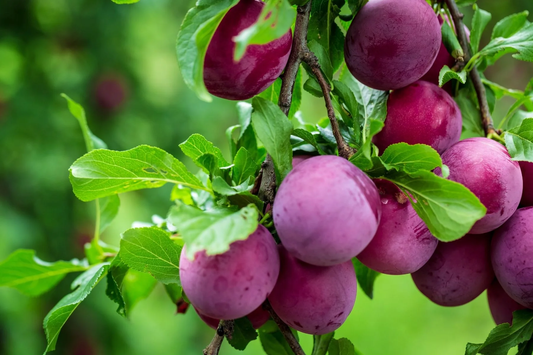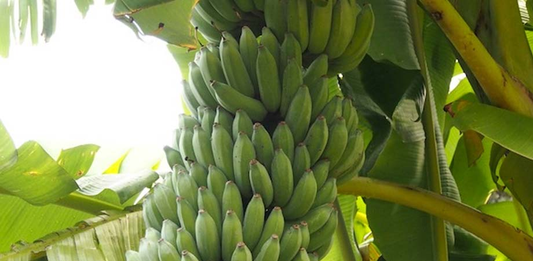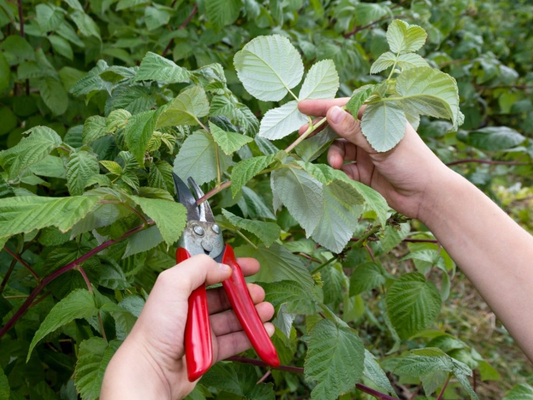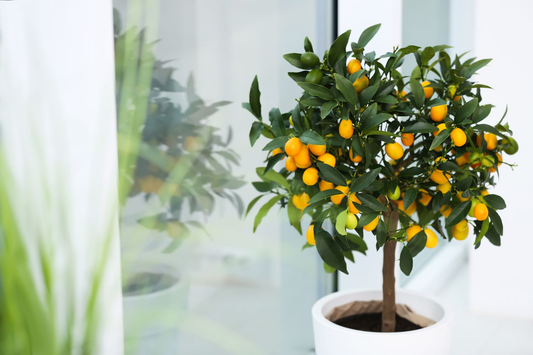How to Grow Lettuce in Pots: The Ultimate Guide to Fresh, Homegrown Greens!
Share
1. Introduction
Growing lettuce in pots is a fantastic option for gardeners, whether you have a small urban balcony, a cozy patio, or even limited indoor space. This method of gardening allows you to grow fresh, nutritious greens right at home, no matter where you live. In this guide, we'll explore everything you need to know about successfully growing lettuce in pots, from the best varieties to tips on care and harvesting. Whether you're a beginner or an experienced gardener, this guide has something for you!
• Why Growing Lettuce in Pots is a Great Option
There are several reasons why growing lettuce in pots is an excellent choice for both seasoned gardeners and newcomers alike:
- Space-saving benefits: Growing lettuce in containers allows you to make the most of small spaces such as balconies, windowsills, or even kitchen countertops.
- Control over growing conditions: With pots, you can control the soil, water, and light, giving you the power to create the perfect growing environment for your lettuce.
- Year-round growing potential: Lettuce is a cool-weather plant, making pots ideal for extending the growing season. In colder months, you can bring your pots indoors or move them to a sheltered location to continue growing.
- Easy access to fresh greens: Growing lettuce at home means you’ll always have fresh, nutrient-packed greens just steps away from your kitchen.
• The Benefits of Homegrown Lettuce
Homegrown lettuce offers a variety of advantages that store-bought lettuce simply can't compete with:
- Freshness: Nothing beats the taste of freshly harvested lettuce. You can pick it right before you eat, ensuring maximum flavor and crispness.
- Convenience: Growing lettuce in pots means you can harvest it whenever you need it, without having to make a trip to the store.
- Sustainability: By growing your own lettuce, you reduce your carbon footprint and decrease the need for plastic packaging.
- Cost savings: Once you’ve set up your pots, the cost of growing lettuce is minimal compared to buying pre-packaged greens.
• What to Expect in This Guide
This guide is designed to walk you through every step of growing lettuce in pots, whether you're just starting out or looking for ways to improve your current container garden. Here’s what you can expect:
- A step-by-step process: We’ll guide you through choosing the right pots, preparing the soil, planting, and caring for your lettuce.
- Tips for beginners: If you’re new to gardening, don’t worry—we’ve included tips to help you avoid common mistakes and succeed from the start.
- Advanced techniques for seasoned gardeners: For those with more experience, we’ll offer advanced care tips, pest control methods, and ideas for increasing your harvest.

2. Why Grow Lettuce in Pots?
Growing lettuce in pots offers many advantages, especially for gardeners with limited space or those looking to grow fresh greens all year round. Let's explore why pots are an ideal option for growing lettuce.
• Space-saving Benefits
One of the primary reasons to grow lettuce in pots is the ability to make the most of small spaces. Whether you live in an apartment, on a balcony, or have limited outdoor space, pots allow you to grow fresh lettuce without the need for a large garden area. Here's why pots are perfect for tight spaces:
- Ideal for small living spaces: Even in urban environments with little outdoor space, pots can be placed on windowsills, balconies, or patios.
- Flexible placement: Pots can be moved around to take advantage of the sun, ensuring your lettuce gets the right amount of light throughout the day.
• Control Over Growing Conditions
When growing lettuce in pots, you have complete control over several critical growing factors, making it easier to create the perfect environment for your plants:
- Soil: You can use the best soil mix for lettuce and ensure it stays well-drained.
- Watering: Pots allow you to regulate water levels more easily, preventing overwatering or underwatering.
- Sunlight: By moving the pots, you can ensure your lettuce gets the right amount of sunlight, which is key to healthy growth.
• Year-round Gardening
One of the most significant advantages of growing lettuce in pots is the ability to extend your growing season:
- Winter gardening: During colder months, you can move your pots indoors or to a sheltered spot, allowing you to grow lettuce year-round.
- Consistent supply: By using pots, you can stagger planting times to ensure a continuous harvest of fresh lettuce, even in the off-season.
3. Choosing the Right Container for Lettuce
Choosing the right container is crucial for growing healthy lettuce. The right pot ensures proper root development, provides adequate space, and helps maintain optimal growing conditions. Let’s dive into what you should consider when selecting the perfect container for your lettuce.
• Size and Depth
When growing lettuce in pots, it's important to choose a container that provides enough space for the roots to grow and spread. Lettuce plants do not have deep root systems, but they do require some space to thrive.
- Minimum size: The container should be at least 6-8 inches deep to accommodate the root system of the lettuce.
- Width matters: A wider pot (around 12-18 inches) allows for better growth and can accommodate multiple lettuce plants.
- Shallow containers: Lettuce grows best in shallow, wide containers that give enough room for the roots to spread horizontally.
• Material Considerations
The material of your container can affect the growth of your lettuce, as it influences drainage, insulation, and overall health of the plant. Here’s a comparison of different pot materials:
- Plastic pots: Lightweight, affordable, and retain moisture well. However, they can heat up in direct sunlight, which may harm plant roots.
- Terracotta pots: These are porous and allow for excellent air circulation to the roots, but they dry out more quickly and need more frequent watering.
- Fabric pots: Highly breathable, which encourages healthy root development. They dry out faster but are ideal for preventing root rot by ensuring good drainage.
• Drainage
Good drainage is essential for growing healthy lettuce, as standing water can lead to root rot and other issues. Always choose containers with adequate drainage holes.
- Drainage holes: Ensure your container has several drainage holes at the bottom to allow excess water to escape.
- Water retention: While pots should have drainage, they should also retain some moisture to keep the lettuce hydrated. A well-balanced container ensures proper water retention without waterlogging.
• Best Pots for Lettuce
Here are some recommended types of containers for growing lettuce:
- Shallow, wide containers: These are the best choice for growing lettuce as they allow the roots to spread evenly and access enough water and nutrients.
- Hanging baskets: Ideal for small-space gardening, hanging baskets can be used to grow lettuce, though they might require more frequent watering.
- Self-watering pots: These pots help maintain consistent moisture levels, reducing the risk of overwatering or underwatering your lettuce plants.

4. Selecting the Best Lettuce Varieties for Pots
Choosing the right lettuce variety is essential for successful growth in pots. Different types of lettuce have different growth habits, and selecting the one that best suits container gardening will ensure you get the best results. In this section, we’ll look at the most popular types of lettuce that thrive in pots and the pros and cons of each.
• Leaf Lettuce
Leaf lettuce is a fantastic option for container gardening due to its compact nature and rapid growth. It tends to spread out rather than forming a tight head, making it ideal for pots.
- Butterhead: Known for its tender, buttery leaves, butterhead lettuce is perfect for pots due to its compact rosette form.
- Romaine: A popular choice for salads, romaine has tall, upright growth and can also grow well in larger pots.
- Loose-leaf varieties: These lettuce varieties are perfect for pots as they grow in a spread-out fashion, allowing for frequent harvesting of individual leaves.
• Head Lettuce
Head lettuce varieties, such as iceberg lettuce, form tight, dense heads. While they are typically better suited for garden beds, some smaller varieties can be grown successfully in pots.
- Iceberg: Iceberg lettuce forms compact heads, but it requires larger pots (at least 12 inches deep) to thrive. It takes longer to mature and may need extra care to prevent bolting.
- Smaller head varieties: Opt for smaller varieties of head lettuce to ensure successful growth in pots.
• Mixed Greens
Growing a mix of different lettuce varieties can offer a variety of flavors and textures, which is perfect for salads. However, there are a few pros and cons to consider:
-
Pros:
- Provides diverse flavors and textures for a more interesting harvest.
- Can maximize space by planting several varieties in one pot.
-
Cons:
- Different varieties may have varying growth rates, leading to uneven harvests.
- Some varieties may need slightly different care or conditions, making it harder to manage the pot.
• Table: Best Lettuce Varieties for Pots
Below is a comparison of some of the best lettuce varieties for growing in pots, including their suitability for pots, growth habits, and harvest times:
| Lettuce Type | Suitability for Pots | Growth Habit | Harvest Time |
|---|---|---|---|
| Butterhead | Excellent | Compact, rosette | 50-60 days |
| Romaine | Good | Tall, upright | 55-70 days |
| Loose-leaf | Very Good | Spreading | 30-40 days |
| Iceberg | Moderate | Compact | 75-90 days |
5. Preparing the Soil for Growing Lettuce in Pots
Soil preparation is a critical step when growing lettuce in pots. Lettuce thrives in light, well-draining soil that allows its roots to breathe and access the nutrients it needs. The right soil mix can make the difference between a bountiful harvest and struggling plants. Here’s how to prepare the best soil for your lettuce pots.
• Importance of Good Soil Mix
For healthy, vibrant lettuce, the soil must meet several key conditions:
- Light and well-draining: Lettuce needs soil that is light enough for its roots to spread and absorb nutrients without becoming waterlogged.
- Moisture retention: While the soil should drain well, it also needs to retain some moisture, as lettuce requires consistent hydration.
- pH balance: Lettuce prefers slightly acidic to neutral soil (pH 6.0 to 7.0). Avoid overly alkaline or acidic soils to prevent nutrient deficiencies.
• Best Soil Mixes
Choosing the right soil mix for your pots is key to success. Here are a few great options:
- Potting mix + compost: A blend of good-quality potting mix and organic compost creates a light, nutrient-rich environment for lettuce. The compost provides essential nutrients, while the potting mix ensures good drainage.
- Pre-made vegetable mixes: You can also purchase pre-made vegetable-specific soil mixes that are designed to support fast-growing crops like lettuce. These mixes typically contain a balanced ratio of organic matter and drainage materials.
• Soil Amendments
While soil amendments can improve soil health, it’s important to choose the right ones for lettuce:
- Avoid heavy fertilizers: Lettuce doesn’t require excessive fertilization. Too much fertilizer, especially synthetic types, can cause excessive leaf growth and poor flavor.
- Organic matter: Organic matter like compost or well-rotted manure is beneficial. It improves soil structure, provides slow-release nutrients, and increases the soil's ability to retain moisture.
- Consider worm castings: For a gentle organic boost, worm castings can improve soil fertility without overwhelming the delicate root system of lettuce.

6. Planting Lettuce in Pots: Step-by-Step Guide
Planting lettuce in pots is a straightforward process, but following each step carefully will ensure a successful harvest. Whether you’re a beginner or an experienced gardener, this step-by-step guide will help you plant and care for your lettuce in pots.
• Step 1: Fill the Pot with Soil
The first step in planting lettuce in pots is preparing the pot with the right soil depth and drainage:
- Ensure proper drainage: Before filling your pot with soil, check that it has drainage holes to prevent water from accumulating at the bottom. This helps prevent root rot and allows water to flow freely.
- Fill to the right depth: Fill the pot with soil, leaving about 1-2 inches of space at the top. Lettuce roots don’t need excessive depth, but the pot should be at least 6-8 inches deep to accommodate the root system.
- Loosen the soil: After filling the pot, lightly rake or tap the soil to ensure it’s loose and not compacted. This will make it easier for the lettuce roots to grow and access moisture and nutrients.
• Step 2: Sowing Seeds or Transplanting Seedlings
Next, you’ll need to decide whether to sow seeds directly or transplant seedlings into the pot. Here’s how to do both:
• Sowing Seeds
- Spacing: Space lettuce seeds about 1-2 inches apart to allow for healthy growth. You can always thin them out later if needed.
- Depth: Sow the seeds about ¼ to ½ inch deep into the soil. Lightly cover the seeds with soil and gently water.
- Watering: Keep the soil moist during the germination process, but avoid over-watering. Lettuce seeds typically germinate in 7-10 days.
• Transplanting Seedlings
- Handling seedlings: If you’re transplanting seedlings, carefully remove them from their nursery pots or trays. Gently loosen the root ball without damaging the roots.
- When to transplant: Transplant seedlings when they are about 3-4 inches tall and have developed a few leaves. Space them 6-8 inches apart to allow room for growth.
• Step 3: Watering Techniques
Proper watering is crucial to growing lettuce in pots. Follow these guidelines for best results:
- Moist but not soggy: Lettuce prefers consistently moist soil, but it’s essential not to let the soil become waterlogged. Water thoroughly but ensure the excess water can drain out of the pot.
- Consistent watering: Lettuce requires regular watering, especially during dry spells. Check the soil daily, and water when the top inch feels dry to the touch.
- Morning watering: Water in the morning to allow the soil to dry out before evening, reducing the risk of fungal diseases.
• Step 4: Positioning Your Pot
Where you place your lettuce pot is critical to its growth. Follow these tips for optimal placement:
- Sunlight requirements: Lettuce requires 6-8 hours of sunlight per day. Choose a location that receives full sun or partial shade. During the hottest part of the day, some afternoon shade can help prevent the leaves from wilting.
- Indoor vs. outdoor options: Lettuce can be grown both indoors and outdoors. If you’re growing it indoors, place the pot near a south or west-facing window. If you’re growing it outdoors, ensure the pot is placed in an area that gets adequate sunlight but isn’t too exposed to wind or intense heat.
- Protect from extremes: Avoid placing your pot in locations where it will be exposed to strong winds or extreme heat, as this can stress the plants and cause wilting or bolting.
7. Maintaining Lettuce in Pots: Care and Attention
Proper care is essential to growing healthy lettuce in pots. Regular maintenance, such as watering, fertilizing, and pest control, will ensure your lettuce thrives. Follow these tips for ongoing care and attention to keep your plants in top condition.
• Watering Routine
Watering is crucial for lettuce, as it thrives in consistently moist soil. Here’s how to maintain a proper watering routine:
- Frequency: Water your lettuce when the top inch of soil feels dry to the touch. Typically, you should water once every 1-2 days, depending on the weather and the size of your pot.
- Moisture levels: The soil should be moist but not soggy. Lettuce is sensitive to overwatering, which can lead to root rot. Check for moisture by sticking your finger into the soil.
- Even watering: Water evenly across the surface to ensure all roots receive moisture. Use a gentle stream of water to avoid disturbing the soil or seedlings.
• Fertilizing Your Lettuce
Lettuce needs periodic fertilization to ensure healthy growth. However, it’s important to use the right fertilizers and to fertilize at the right time:
- When to fertilize: Fertilize your lettuce about 2-3 weeks after planting, once the seedlings have established roots. After that, you can fertilize every 3-4 weeks.
- Organic options: Organic fertilizers, such as compost or worm castings, are ideal for lettuce. These slow-release options provide essential nutrients without the risk of overwhelming the plant.
- Liquid fertilizer: If using liquid organic fertilizers, dilute them according to the instructions and apply every 2-3 weeks. Avoid high-nitrogen fertilizers, as they can cause excessive leaf growth and poor flavor.
• Pest Management
Pests can be a challenge for lettuce, especially when grown in pots. Here’s how to manage common pests:
- Aphids: These small insects suck sap from the leaves, leading to yellowing and stunted growth. To prevent aphids, you can spray the leaves with a gentle stream of water to dislodge them or use organic insecticidal soap.
- Slugs: Slugs love to munch on lettuce leaves. To prevent slugs, you can create barriers around the pot using diatomaceous earth, crushed eggshells, or copper tape. Alternatively, beer traps can be used to attract and drown slugs.
- Regular inspections: Check your lettuce regularly for signs of pest damage. Early detection allows for quicker intervention and minimizes the risk of infestation.
• Pruning and Thinning
Thinning and pruning your lettuce plants is essential for promoting healthy growth and preventing overcrowding:
- When to thin: Thin seedlings when they are about 2-3 inches tall to prevent overcrowding. This gives the remaining plants room to grow and ensures better air circulation.
- How to thin: Use small scissors or garden shears to cut away the extra seedlings at the base. Be sure to leave the strongest plants to continue growing.
- Pruning leaves: You can also prune older leaves to encourage new growth. Simply trim off any yellowed or damaged leaves at the base.
• Temperature Control
Lettuce is a cool-weather plant, and maintaining the right temperature is key to its growth:
- Ideal temperature range: Lettuce grows best in temperatures between 55-75°F (13-24°C). Extreme heat or cold can cause lettuce to bolt (go to seed) or stunt growth.
- Managing temperature: If growing outdoors, place your pots in a shaded spot during the heat of summer to prevent bolting. In colder climates, consider bringing pots indoors or using row covers to protect from frost.
- Indoor growing: For indoor pots, place your lettuce near a window with good light but away from drafts or extreme temperature fluctuations.

8. Harvesting Lettuce from Pots
Harvesting lettuce at the right time and in the right way ensures the best taste and continued growth. Here’s everything you need to know about harvesting lettuce from pots, including when to pick, how to do it, and how to keep your lettuce fresh after harvest.
• When to Harvest
Knowing when to harvest is key to enjoying the freshest lettuce. Here’s how to tell when your lettuce is ready:
- Leaf size: For most lettuce varieties, leaves are ready to be harvested when they reach a sufficient size, typically around 4-6 inches long.
- Color: The leaves should have rich, vibrant color. If the leaves start to yellow or show signs of wilting, it's time to harvest.
- Bolting signs: If the plant begins to flower or bolt (send up a tall seed stalk), it’s best to harvest immediately as the flavor may become bitter.
- Growth habit: For loose-leaf types, you can begin harvesting once the leaves are large enough, while head lettuce should be harvested once the head feels firm and compact.
• How to Harvest
Different lettuce types may require different harvesting methods. Here’s how to harvest properly:
- Cutting leaves: For loose-leaf varieties, you can pick outer leaves as needed by cutting them with scissors or garden shears. This method allows the plant to continue producing new leaves from the center.
- Pulling entire plant: For head lettuce varieties (like Butterhead or Romaine), it’s best to pull the entire plant once it forms a full head. You can cut the head at the base using a sharp knife.
- Leave some growth: If harvesting outer leaves, leave the inner part of the plant intact to allow for regrowth over time.
• Post-Harvest Care
Once your lettuce is harvested, it’s important to store it properly to maintain freshness:
- Rinse the leaves: Gently rinse harvested leaves under cool water to remove any dirt or pests.
- Dry thoroughly: After rinsing, gently pat the leaves dry with a clean towel or use a salad spinner to remove excess water.
- Storage: Store harvested lettuce in the refrigerator in a sealed plastic bag or container with a damp paper towel. This will keep the leaves crisp and fresh for several days.
• Regrowing Lettuce
One of the great benefits of growing lettuce in pots is that you can regrow it after harvesting:
- Can lettuce regrow? Yes! Many types of lettuce can regrow after you cut the outer leaves. If you leave the central growing part of the plant intact, new leaves will emerge in a few weeks.
- How to regrow: Simply cut the leaves from the outer edges, leaving the core of the plant intact. Keep the soil moist and provide adequate light. Within a few weeks, you'll have fresh, new leaves to harvest.
- Best varieties for regrowing: Loose-leaf types, like Romaine and Butterhead, tend to regrow better than head lettuce varieties.
9. Common Problems When Growing Lettuce in Pots
Growing lettuce in pots can be rewarding, but it’s important to be aware of common problems that may arise. Here's a guide to some of the most frequent issues gardeners face and how to address them effectively.
• Overwatering or Underwatering
Proper watering is one of the most crucial aspects of lettuce care. Both overwatering and underwatering can lead to significant issues.
- Symptoms of overwatering: Yellowing leaves, soggy soil, root rot, and wilting despite wet soil.
- Symptoms of underwatering: Dry, crispy leaves, slow growth, and shriveled soil.
- How to fix it: Ensure proper drainage in your pot. Water only when the top 1-2 inches of soil are dry. For overwatered plants, allow the soil to dry out before watering again.
• Lettuce Bolting (Going to Seed)
Bolting is when lettuce starts to flower and go to seed, which makes the leaves taste bitter and inedible.
- Causes of bolting: High temperatures, excessive sunlight, or planting too late in the season.
- How to prevent it: To avoid bolting, grow lettuce in cooler temperatures (55-75°F) and ensure it receives partial shade during hot summer months. Plant in early spring or fall to avoid the heat.
• Nutrient Deficiencies
Lettuce requires specific nutrients to grow properly. A lack of certain nutrients can result in stunted growth or unhealthy leaves.
-
Common deficiencies:
- Nitrogen deficiency: Yellowing leaves and poor growth. Nitrogen is essential for healthy leaf development.
- Iron deficiency: Yellowing leaves with green veins.
- How to address deficiencies: Use a balanced organic fertilizer that contains nitrogen. Compost and well-aged manure are also great natural sources of nutrients.
• Pests and Diseases
Pests and diseases can damage your lettuce, especially when grown in pots. Here are the common culprits:
- Aphids: Tiny pests that suck sap from lettuce leaves, causing deformation and yellowing.
- Slugs: Slugs and snails love to nibble on tender, young lettuce leaves.
- Fungal infections: Fungal diseases can thrive in moist, stagnant conditions, causing rot or mildew on leaves.
- How to prevent pests and diseases: Hand-pick pests, use neem oil or insecticidal soap to manage aphids and slugs. Improve air circulation around the plant to reduce fungal infections.
• Table: Common Lettuce Problems and Solutions
| Problem | Cause | Solution |
|---|---|---|
| Overwatering | Poor drainage or excess watering | Ensure proper drainage, water only when needed |
| Lettuce bolting | High temperatures, too much light | Grow in cooler weather or use shading |
| Nitrogen deficiency | Yellowing leaves | Use a balanced, organic fertilizer |
| Slugs & aphids | Soft, young leaves | Hand-pick pests, use neem oil or insecticidal soap |
Being aware of these common problems and knowing how to address them will help you maintain healthy lettuce plants in pots. Regular observation, proper care, and the right tools can make all the difference in keeping your lettuce thriving.

10. Best Time to Grow Lettuce in Pots
Timing is key to successful lettuce cultivation. Lettuce thrives in cooler temperatures, so understanding the best time to plant is essential for a bountiful harvest. Here's a guide to help you determine when to grow lettuce in pots and how to manage growing conditions for both indoor and outdoor settings.
• Ideal Seasons for Planting
The best seasons to plant lettuce are:
- Spring: Lettuce grows best in cool temperatures (55-75°F). Spring provides mild weather, allowing lettuce to grow before the summer heat sets in.
- Fall: Similar to spring, fall offers cool temperatures that are ideal for lettuce growth. Planting in early fall allows for a late-season harvest before the first frost.
- Avoid summer: Lettuce tends to bolt (go to seed) when the temperatures rise above 80°F. During the summer months, growing lettuce can be challenging unless you're in a cooler climate or use shade to protect the plants.
• Indoor vs. Outdoor Growing
Lettuce can be grown both indoors and outdoors, but managing the temperature is important for successful growth:
- Indoor growing: Indoor pots provide more control over the environment. Keep your lettuce near a window with good natural light or use grow lights to supplement. Maintain a temperature of 60-70°F for optimal growth.
- Outdoor growing: Outdoor pots are great for spring and fall, but it's crucial to monitor the temperature. Avoid planting in the peak of summer when temperatures can exceed the ideal range. Use shade cloth or place pots in partial shade if needed.
11. Tips and Tricks for Growing Lettuce in Pots Like a Pro
Growing lettuce in pots can be highly rewarding, and with a few pro tips, you can make the most of your space and enjoy a continuous harvest. Here are some expert tricks to help you grow lettuce like a seasoned gardener.
• Maximizing Space
Even if you have limited space, there are ways to grow a variety of plants:
- Companion planting: Pair lettuce with fast-growing herbs or other leafy greens like spinach or arugula. These plants have similar growing needs and won't overcrowd each other in the same pot.
- Stacking pots: For smaller spaces like balconies or patios, use tiered plant racks or stackable pots to grow multiple lettuce plants vertically, saving space while increasing your yield.
• DIY Pot Ideas
Get creative with your containers to make gardening both fun and functional:
- Recycled containers: Old buckets, wooden crates, or even wooden pallets can be transformed into unique planting solutions. Ensure they have proper drainage for healthy roots.
- Hanging baskets: For a different look, plant lettuce in hanging baskets to utilize vertical space, especially in small gardens or patios.
• How to Extend Your Harvest
With a little planning, you can enjoy fresh lettuce year-round:
- Succession planting: Start new lettuce seeds every 2-3 weeks to ensure a steady supply of fresh greens. This method helps avoid gaps between harvests and ensures continuous availability.
- Cold frames or cloches: In cooler months, use cold frames or cloches to extend your growing season and protect lettuce from early frosts.
12. FAQ (Frequently Asked Questions)
Here are answers to some of the most common questions about growing lettuce in pots. Whether you're a beginner or an experienced gardener, these tips will help you grow healthy and delicious lettuce right at home.
• 1. Can you grow lettuce in pots indoors?
Yes, lettuce can be grown indoors successfully as long as you provide adequate lighting and temperature control. Place your pots near a sunny window or use grow lights to ensure the lettuce gets 6-8 hours of light per day. Keep the temperature between 55-70°F for optimal growth.
• 2. How often should I water my lettuce in pots?
Water your lettuce when the top inch of soil feels dry to the touch. Lettuce prefers consistently moist soil but be careful not to overwater, as soggy conditions can lead to root rot. Always ensure your pot has proper drainage.
• 3. What is the best type of lettuce for beginners to grow in pots?
Loose-leaf varieties, such as butterhead or leaf lettuce, are the best for beginners. These varieties are easy to grow, mature quickly, and can be harvested continuously by picking the outer leaves.
• 4. Can I grow lettuce in pots without using any fertilizer?
Yes, lettuce can be grown in pots without fertilizer if your soil is rich in organic matter. However, a light application of organic fertilizer, such as compost or a balanced vegetable fertilizer, can boost growth and yield, especially if the soil is nutrient-poor.
• 5. How long does it take for lettuce to grow in pots?
Lettuce typically takes between 30-60 days to grow, depending on the variety and growing conditions. Loose-leaf varieties are generally quicker to mature (30-40 days), while head lettuce varieties can take longer (50-75 days).
Additional Resources
These Best Indoor Plants for Low Light Will Revolutionize Your Home De – XRoci
How to Plant Seeds in Spring: Start Your Garden Adventure Right Now! – XRoci
How to Care for Hanging Plants Indoors: Easy Hacks for Gorgeous, Healt – XRoci




